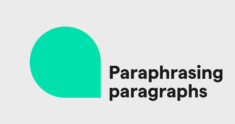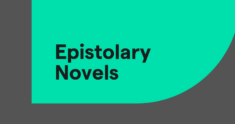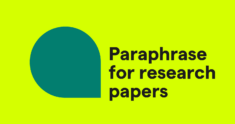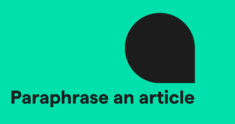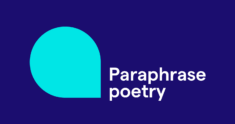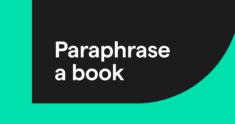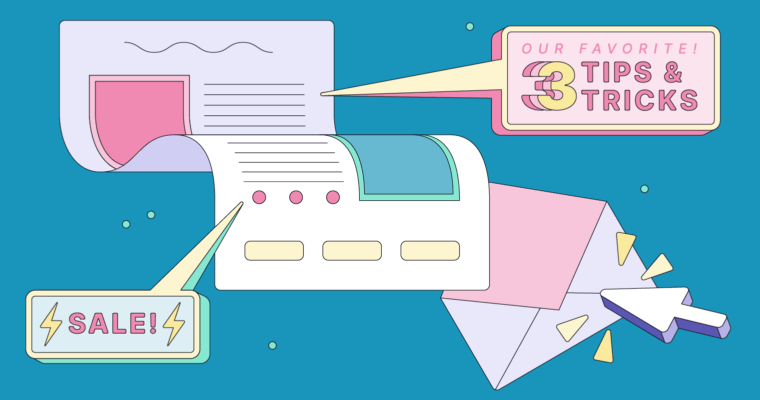
A newsletter is essentially a miniature newspaper sent via email. Email newsletters are a great way to build trust with your audience and keep them informed. They can include compelling content, announcements, promotions, or news.
What does it take to write a great email newsletter? We’ll cover that in this article. Successful newsletters define their target audience, give readers an enticing reason to subscribe, create a consistent schedule and template, and gather useful content for their audience. Before we get ahead of ourselves, let’s talk about how to start a newsletter.
What is a newsletter, and what is its function?
A newsletter is a form of email marketing that is sent on a regular basis. Email newsletters can be roundups of news, events, promotions, or content. Email newsletters are a great way to build relationships with members of your warm audience (warm audience members are people who have engaged with your brand in some way before).
Newsletters function to keep your subscribers informed about a particular topic, subject area, or your company or organization. They’re not about selling; they’re about building awareness or brand awareness through valuable content.
Who writes newsletters?
Email newsletters are often written by an email marketing specialist within a company, a freelance writer, or an agency that specializes in email marketing. But virtually anyone can write an email newsletter.
If you’re a solo entrepreneur, starting an email newsletter can help you build a community of subscribers or buyers. If you’re a content creator or artist, you can use a newsletter to drive traffic. Medium to large businesses can use newsletters to foster consistent sales and growth. A nonprofit might use a newsletter to inform its donors and build a community of action-takers.
Who subscribes to newsletters?
Generally, when someone commits to receiving regular communications from you or your organization, they are aware of you or your brand. According to Hubspot, consumers sign up for email newsletters because they want to be notified about sales, receive a brand’s content, or get company announcements.
What to consider when creating your own newsletter
When starting your own newsletter, you should consider what your goals for the newsletter are, why you want to start a newsletter, and who your audience will be.
Not sure what kind of newsletter you want to start? Here are some newsletter ideas that you could try:
- Blog roundups: Great for those who already have an active blog, these include a short segment of the blog and motivational copy that drives your readers to click through to the blog itself.
- Upcoming events: Perfect for organizations that host events or feature events from around their community. These emails share three to five events that fit into the same category.
- Customer-focused: This style of email is usually used by retailers, restaurants, and service-based businesses to keep their audience informed about the latest products and deals. It can include two or three sections that feature product information, upcoming events, and nods to the brand’s mission.
- Lead nurturing: Value-packed emails to help your audience get to know your brand at their own pace through short- and long-form content, product updates, events, or news stories about your organization. These usually include two to three sections.
- Anthology: A collection of news, interest pieces, podcasts, videos, or blogs from around the web. This type of email can be used to establish authority, entertain, build community, or co-market. Anthology emails often include five or more sections.
How to start your newsletter
First, consider your audience. Look at your ideal buyer persona or analyze who already consumes your content. How can you bring value to them? How can you save them time, share your expertise, or save them money? This will help you decide the content of your newsletter.
Next, outline your goals. Are you creating a newsletter to share information, for brand awareness, to build a community that buys from you, or to increase traffic? This will help you determine the best call to action for your newsletter.
How to structure a newsletter
Once you’ve defined your goals and your audience, it’s time to build the structure of your newsletter. A great newsletter is made up of two or more sections that bring value to your reader and drive them toward your calls to action.
A call to action is a written directive that encourages a subscriber to complete an action. In email newsletters, calls to action are usually buttons leading readers to an external link.
You can think about your email newsletter as if it’s a miniature newspaper. It will have a few separate columns with slightly different topics within a theme. Some will have graphics and others won’t.
What to include in your newsletter
There are eight essential components that you should include in your newsletter.
1 A click-worthy subject line
2 Informative preview text
3 Valuable featured content
4 Eye-catching graphics and an easily readable layout
5 A clear call to action
6 Minimal promotions
7 Contact and social information
8 An unsubscribe option
Your email newsletters should be 90 percent educational and 10 percent promotional. Unlike marketing emails, newsletters are designed to increase brand awareness—not directly impact your sales.
Valuable content and a strong call to action are the main focus of a newsletter. Here are some examples of valuable content you could include in your email newsletter:
- Upcoming events
- Latest blog posts or a mini blog post just for email
- Products (three or fewer)
- Value (tips, tricks, free resources, etc.)
- Projects you’re working on
- Flash sales
- Industry or local news
- Holiday-related content
- Spotlight an employee or customer
- Feature a guest or an influencer
- Share any open jobs your company has
- Tips that help your clients use your products
- Frequently asked questions or advice
- Behind-the-scenes content
- Testimonials and case studies
- User-generated content
- A short thought leadership piece
- New recipes
How to outline a newsletter
Your newsletter should be consistent and follow the same format each time you send it out. Creating a template that you can use for the lifetime of your newsletter is the easiest way to outline your newsletter.
To outline your newsletter, define the pillars of your business that you think will be the most valuable for your audience. Then, select the types of information you want to include—usually, about two to three items within the same theme. Then, lay out how you’ll include graphics with these topics. Finish it off with an enticing call to action.
5 tips for writing a newsletter
Now that you know how to structure your newsletter, let’s talk about how to actually write it. Below we explain six best practices for writing your newsletter from topic to tone.
1 Stick to one topic
Pick one theme for your newsletter. This will help it feel cohesive and avoid confusing your reader. Subscribers love consistency and knowing what they can look forward to. This could be freelance tips every Friday, new recipes every Thursday, or a roundup of local events each Sunday. Tie together the different sections of your newsletter with transition sentences to keep it cohesive.
2 Give subscribers a good reason to opt in
Your newsletter should benefit its readers. Get them to subscribe with enticing offers! Make it about your audience, not just about your or your business.
Here are some great reasons someone might want to opt in to your newsletter.
- A discount code
- A free downloadable resource, template, ebook, or guide
- A free mini email or video course
- New recipes each week
- Weekly tips
3 Stay consistent
You can send your newsletter as often as you want. Some options are weekly, biweekly, monthly, or quarterly. Globally, Fridays see the highest email open rates, but most studies suggest the best day to send an email newsletter is Tuesday morning.
4 Create click-worthy subject lines
Your newsletter recipients will be receiving dozens of emails per day. They decide which ones to open based on the subject line. To actually get your newsletter opened, use compelling subject lines that communicate the value that your email will provide.
Subject lines should be fifty characters or fewer so that they fit within the email provider’s preview windows. Generally, subject lines that are formatted in sentence case get opened more because they’re easier to read.
5 Speak directly to one person in your audience
Keep your newsletter conversational. Before you start writing your newsletter, consider your ideal subscriber and write specifically to one of them. Take it one step further and personalize your newsletter for each reader.
Most email platforms can auto-populate the subscriber’s name in the subject line or greeting of your email. Emails that address the recipient by their first name can get as much as 20 percent higher open rates.
6 things to avoid when writing a newsletter
Avoid these six things to make sure your newsletter gets opened, read, and acted upon.
1 Don’t make it too long
You want your subscribers to take action based on your email, not read it all day. Keeping your copy short and sweet gives subscribers enough information and a taste of your brand while leaving them room to take action.
Newsletters that are 250 words or fewer in the main content segment are more likely to be read all the way through. Sticking to three short paragraphs keeps this simple. If you want to include longer content, consider putting an intro to the content in the newsletter with a link to a blog post or download that the reader can navigate to if they want to read more. Grammarly’s writing tone detector can help you make sure your newsletter comes across as informal and confident.
2 Keep it simple
With both design and copy, minimalist is best. And keep in mind that 81 percent of all emails are read on mobile devices. Make sure your design is responsive and easy to read on any device. Always test your newsletter before you send it out to your list to make sure it’s readable!
3 Don’t forget your audience
You’ll most likely be sending your newsletter to your entire audience. When you’re considering topics for your newsletter, make sure they’re broad enough to provide the majority of your audience with value. Consider how you can save them time, provide them with useful information, share your expertise in an approachable way, or build connections with your audience.
4 Avoid including too many calls to action
If you want successful click-through rates, stick to only one call to action. That’s not to say you can’t include more than one link in your newsletter. But you should know which call to action you want to prioritize and make it enticing for your readers to complete it.
Here are some calls to action that you could consider including in your newsletter:
- Check out the blog post
- Forward this to a friend who would like it
- Shop our latest sale
- RSVP for our event
- Purchase tickets
- Read the guide
- Get tips
- Watch now
5 Don’t ghost your audience
One of the benefits of sending a newsletter is keeping your brand top of mind. But if you send your newsletter infrequently or sporadically, your subscribers will feel like you’ve ghosted them. If you’re going to start a newsletter, plan to send it at least once per quarter. Weekly or monthly is even better! If you do plan to take a break from sending your newsletter at any time, let your audience know when you’ll return to their inboxes.
6 Don’t forget to put yourself in your recipients’ shoes
Consider how you want your writing to come across when a subscriber reads it. Do you want to be perceived as a knowledgeable expert, an industry leader, or a comfortable community? The right tone is the one that pulls the reader in and makes them want to know more. Get to know what your audience is looking for so that you can meet them where they are when you communicate with them.
Newsletter FAQs
What is a newsletter?
A newsletter is a routine email that delivers a list of your most valuable content, announcements, and promotions. Newsletters are used to build trust, drive traffic, and grow brand awareness.
How is a newsletter structured?
A newsletter is structured similarly to a newspaper made for email. Newsletters feature multiple sections of content that each fit into the same topic.
What are the elements of an effective newsletter?
A newsletter is made up of eight key components:
1 A click-worthy subject line
2 Informative preview text
3 Valuable featured content
4 Eye-catching graphics and an easily readable layout
5 A clear call to action
6 Minimal promotions
7 Contact and social information
8 An unsubscribe option

